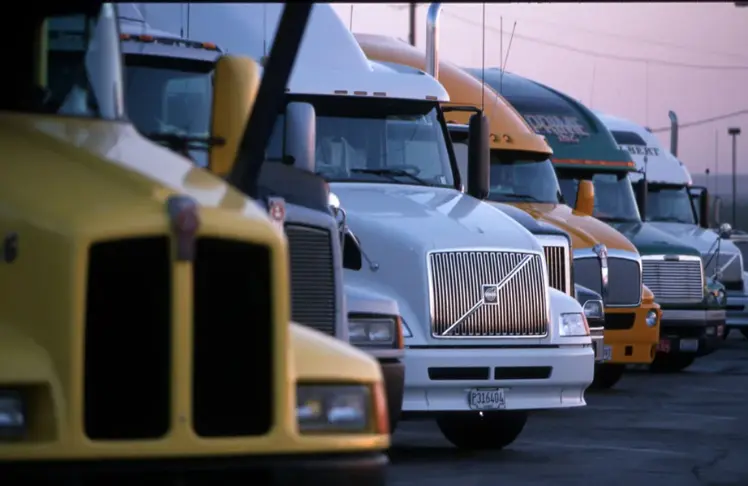
Freeways, ports, and other industrial areas are often seen on the horizon — or closer, in some instances — in Black communities. Living in close quarters to, say, factories or petrochemical plants or other fixed sources of pollution is hugely detrimental to public health in such neighborhoods. But there’s another major contributing factor that’s always coming and going: the semi-trucks and other heavy-duty vehicles that most industrial facilities rely on: In the coming decades, however, emissions from those trucks will drop precipitously thanks to new rules announced by the Biden Administration last week.
According to the Environmental Protection Agency, a quarter of new long-haul trucks could be fully electric by 2032 as a result of the new, ever-tightening emissions standards. The way the new rules work is that, after 2027, the overall amount of pollution allowed across a truck manufacturer’s entire product line will be gradually tightened more and more with each year. It’s up to truck makers to figure out how to meet those standards, so you’ll likely see some combination of all-electric trucks, hybrids, low-emission diesels, and other alternative fossil fuels like hydrogen. According to EPA estimates, 40% of mid-sized trucks like delivery vans could be all-electric come 2032 as well. Currently, less than 2% of heavy-duty vehicles are electric.
The change will reduce greenhouse-gas emissions significantly and improve air quality overall. But Black and brown communities have the most to gain in terms of public health: Emissions from trucks (and cars too) are one of the sources of pollution that most disproportionately affect non-white communities, according to a 2021 study.
While Black communities are more likely to have close proximity to freeways in general, in many instances they are also cheek-and-jowl with major shipping and freight infrastructure — and it’s these asthma-plagued communities that arguably have the most to gain from reduced truck emissions.
In Southern California, home to the twin Ports of Long Beach and Los Angeles, the fourth and fifth-largest in the country respectively, Black and Latinx communities along the 710 freeway corridor bear the brunt of the pollution that comes from the endless truck traffic. And in Chicago, a major freight hub, both medium- and heavy-duty truck traffic is highest in the Black and brown communities on the city’s more industrial Southwest side.
The trucking and truck-manufacturing industries are of course not exactly thrilled with the new rules. And there are real hurdles that will need to be cleared before the U.S. would be even capable of having a fully electrified heavy-duty vehicle fleet.
Cost is a barrier: an all-electric long-haul truck can run over $400,000. It’s also not yet possible to drive such a truck over long distances as there are just 5,000 compatible charging stations across the country, and only a small percentage are fast charging stations. There is, however, billions of dollars in federal funding available for investment in both privately owned electric trucks (through tax credits) and charging infrastructure (through block grants available to state and local governments) between both the infrastructure law and the Inflation Reduction Act.
While long-haul freight is a major component of American shipping and logistics, a lot of heavy-duty truck trips cover much shorter distances: two-thirds fall under the 250-mile range. So for companies that, say, have fleets devoted to moving shipping containers from the Ports of Long Beach and Los Angeles to fulfillment warehouses in the Inland Empire, just a short drive away, it’s already logistically feasible to use zero-emission trucks.
And as the New York Times reports, some firms are doing just that: 4 Gen Logistics already has 70 zero-emission trucks, and plans on switching over its last 20 diesel trucks in the coming year too. Which means that communities along the 710, which clean-air activists have dubbed Asthma Alley, will start to breathe at least somewhat easier sooner rather than later.















